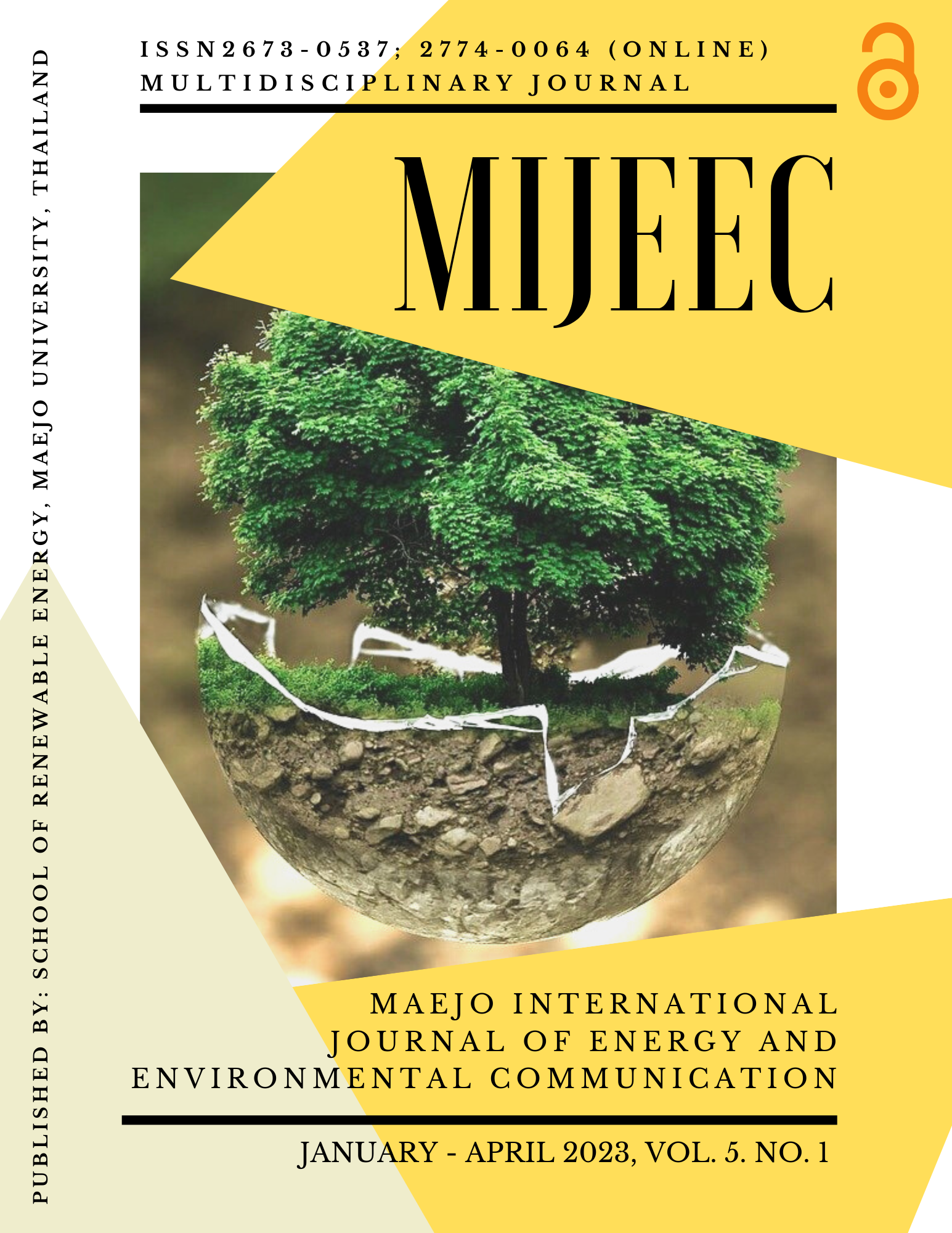Advancing spotted babylon broodstock performance and sustainable aquaculture practices through natural and formulated feeds
Main Article Content
Abstract
In the approach to optimize spotted babylon (Babylonia areolata) broodstock nutrition within hatchery environments, two distinct experiments were conducted. The first focused on broodstock, having an average weight of 43g. They were exposed to various natural feeds, with yellow stripe trevally being a notable inclusion, and they were kept at a density of 50 snails/m2. The following phase centered on juveniles, assessing the impact of replacing fishmeal with beef scraps and bonemeal in different proportions: 0%, 10%, 20%, and 30%. Yellow Stripe Trevally meat was used as a comparative control diet. These juveniles were kept at a density of 180 snails/m2. Both experimental groups were housed in standardized tanks, benefiting from a consistent 12-hour seawater supply daily. Through diligent monitoring, we observed that the trevally diet led to marked improvements in the growth and reproductive performance of the broodstock. On the other hand, for the juvenile group, the traditional diet was superior up to the 20% fishmeal substitution level. However, the growth rate diminished notably with a 30% substitution. Across the board, there was a consistent survival rate among all experimental groups. In sum, this study’s findings underscore the effectiveness of yellow stripe trevally as a potent feed for broodstock. Additionally, when considering juvenile diets, fishmeal substitution with beef and bonemeal should be approached cautiously, ideally at most 20%.
Article Details

This work is licensed under a Creative Commons Attribution-NonCommercial-NoDerivatives 4.0 International License.
Copyright © 2019 MIJEEC - Maejo International Journal of Energy and Environmental Communication, All rights reserved. This is an open-access article distributed under the terms of the Creative Commons Attribution-NonCommercial- Attribution 4.0 International (CC BY 4.0) License
References
Ahmad, A., W. Hassan, S., & Banat, F. (2022). An overview of microalgae biomass as a sustainable aquaculture feed ingredient: Food security and circular economy. Bioengineered, 13(4), 9521-9547.
AOAC. (2012). Official methods of analysis. 16th edn. Association of Official Analytical Chemists, Arlington, Virginia, USA.
Ballestrazzi, R., Rainis, S., Tulli, F., & Bracelli, A. (2003). The effect of dietary coconut oil on reproductive traits and egg fatty acid composition in rainbow trout (Oncorhynchus mykiss). Aquaculture International, 11, 289-299.
Bautista-Teruel, M. N., Millamena, O. M., & Fermin, A. C. (2001). Reproductive performance of hatchery-bred donkey's ear abalone, Haliotis asinina, Linne, fed natural and artificial diets. Aquaculture research, 32, 249-254.
Chaitanawisuti, N., & Kritsanapuntu, A. (1997). Laboratory spawning and juvenile rearing of the marine gastropod: Spotted Babylon, Babylonia areolata Link 1807 (Neogastropoda: Buccinidae), in Thailand. Oceanographic Literature Review, 11(44), 1351.
Chaitanawisuti, N., Sangsawangchote, S., & Piyatiratitivorakul, S. (2011). Differences in fatty acid composition of egg capsules from broodstock spotted babylon, Babylonia areolata, fed a local trash fish and formulated diet under hatchery conditions. Aquaculture international, 19, 23-31.
Daroonchoo L., Lawanyawut, K., & Senavinin, K. (2005). Culture of spotted babylon (Babylonia areolata) with 3 different diets. Chantaburi Coastal Fisheries Research and Development Center. Department of Fisheries. [In Thai].
Dobson, G. T., Duy, N. D. Q., & Southgate, P. C. (2021). Preliminary assessment of large-scale co-culture of sandfish (Holothuria scabra) with the Babylon snail (Babylonia areolata) in earthen ponds and in raceways. Journal of the World Aquaculture Society, 52(1), 138-154.
Fu, J., Shen, M., Shen, Y., Lü, W., Huang, M., Luo, X., Yu, J., Ke, C., & You, W. (2018). LC–MS/MS-based metabolome analysis of biochemical pathways altered by food limitation in larvae of ivory shell, Babylonia areolata. Marine Biotechnology, 20, 451-466.
Haitana, N. C., Sawang, S. A., & Piyat, S. H. (2016) Contrasts in unsaturated fat conformation of egg cases from broodstock spotted babylon, took care of a nearby waste fish and figured eating regimen under incubator conditions. Advances in Animal Science, Fishery and Technology, 2 (1),1-7.
Hall, M. R., Motti, C., & Kroon, F. (2017). The potential role of the giant triton snail, Charonia tritonis (Gastropoda: Ranellidae) in mitigating populations of the crown-of-thorns starfish. Reef and Rainforest Research Centre Limited, Cairns.
Kritsanapuntu, S., Chaitanawisuti, N., Santhaweesuk, W., & Natsukari, Y. (2006). Growth, production and economic evaluation of earthen ponds for monoculture and polyculture of juveniles spotted babylon (Babylonia areolata) to marketable sizes using large-scale operation. Journal of Shellfish Research, 25(3), 913-918.
Kritsanapuntu, S., & Chaitanawisuti, N. (2015). Replacement of fishmeal by poultry by-product meal in formulated diets for growing hatchery-reared juvenile spotted babylon (Babylonia areolata). Journal of Aquaculture Research and Development, 6(4).
Ling, S., Kuah, M. K., Muhammad, T. S. T., Kolkovski, S., & Shu-Chien, A. C. (2006). Effect of dietary HUFA on reproductive performance, tissue fatty acid profile and desaturase and elongase mRNAs in female swordtail Xiphophorus helleri. Aquaculture, 261(1), 204-214.
Moutinho, S., Martínez-Llorens, S., Tomás-Vidal, A., Jover-Cerdá, M., Oliva-Teles, A., & Peres, H. (2017). Meat and bone meal as partial replacement for fish meal in diets for gilthead seabream (Sparus aurata) juveniles: Growth, feed efficiency, amino acid utilization, and economic efficiency. Aquaculture, 468, 271-277.
Stickney, R. R., & Gatlin III, D. M. (2022). Aquaculture: An introductory text. Cabi.
Utting, S. D., & Millican, P. F. (1997). Techniques for the hatchery conditioning of bivalve broodstocks and the subsequent effect on egg quality and larval viability. Aquaculture, 155(1-4), 45-54.
Paibulkichakul, C., Yothakong, T., & Paibulkichakul, B. (2008). Optimal protein level in artificial diet on growth for juvenile Babylonia areolata Link. KKU Research Journal 13(1), 103-113. [In Thai].
Sangsawangchote, S., Chaitanawisuti, N., & Piyatiratitivorakul, S. (2010). Reproductive performance, egg and larval quality and egg fatty acid composition of hatchery-reared Spotted Babylon (Babylonia areolata) broodstock fed natural and formulated diets under hatchery conditions. International Journal of Fisheries and Aquaculture, 1(1), 049-057.
Sreejaya, R. (2008). Studies on spawning and larval rearing of the whelk, Babylonia spirata (Linnaeus, 1758) (Neogastropoda: Buccinidae) (Doctoral dissertation, Central Marine Fisheries Research Institute.
Wang, C., Li, Z., Wang, T., Xu, X., Zhang, X., & Li, D. (2021). Intelligent fish farm-the future of aquaculture. Aquaculture International, 1-31.






